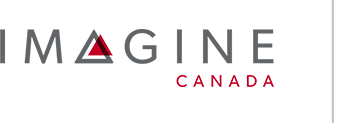Standards Section D : Staff Management
Search results
-
Canadian nonprofit sector compensation and benefits study
2012 CharityVillage Associated Resource Centre Inc Staff management: Compensation and benefits Human resources Surveys Salaries Compensation Benefits Canada Purchase the most recent report from CharityVillage CharityVillage salary survey Survey conducted ...
-
Standard D1: HR policies
HR policies detail your organization’s expectations of its staff and ensure that employees are treated ethically and in compliance with all applicable legislation.
-
Standard D2: Accessibility of HR policies
In order for HR management policies to be implemented effectively, they must be thoroughly understood by all staff. Ideally, the behaviours and actions outlined in your HR management policies become part of your organization’s work culture.
Standard D2 Explained
-
Standard D3: Review of HR policies
Reviewing HR policies regularly and revising them if necessary ensures that your organization’s policies incorporate any changes in relevant legislation and that they continue to reflect best practices in HR management.
Standard D3 Explained
-
Standard D4: Compensation practices
Your organization’s compensation structure reflects and influences its work culture.
Standard D4 Explained
-
Standard D5: Job descriptions
A formal job description lists all the activities and competencies required for a position and creates a structure with which to assess individual performance.
Standard D5 Explained
-
Standard D6: Recruitment and selection process
Ensuring that all potential employees are assessed based on the same criteria ensures that the process of recruiting and selecting employees is fair and professional.
Standard D6 Explained
-
Standard D7: Offers of employment
Although many organizations prefer to extend offers of employment in person or over the phone, a formal letter of employment allows an organization to clearly communicate its expectations to new recruits, ensuring that they comprehend the terms of their employment including salary, benefits, reporting and supervision relationships, as well as any conditions related to the offer.
-
Standard D8: Orientation and training of new employees
Orientation improves an employee’s performance, strengthens their commitment to their organization, and can promote staff retention.
-
Standard D9: Performance objectives
Work plans and/or performance objectives are a key ingredient of any performance management process and can help employees to be more effective in their roles.
Standard D9 Explained
-
Standard D10: Performance evaluation
Assessing an employee’s performance helps ensure that they are accomplishing the goals of their position, contributing to the strategic direction of the organization, and acting in alignment with your organization’s culture.
Standard D10 Explained
-
Standard D11: Employee development
Ongoing professional development helps employees improve their performance in their roles and build the skills they need to advance.
Standard D11 Explained
-
Standard D12: Succession planning
A succession plan describes how an organization will respond to the expected or unexpected departure of critical staff members.
Standard D12 Explained
-
Standard D13: Workplace conflict
Workplace conflicts arise in all organizations, and having a formal process in place helps employees resolve emerging conflicts quickly before they escalate into larger problems.
Standard D13 Explained

